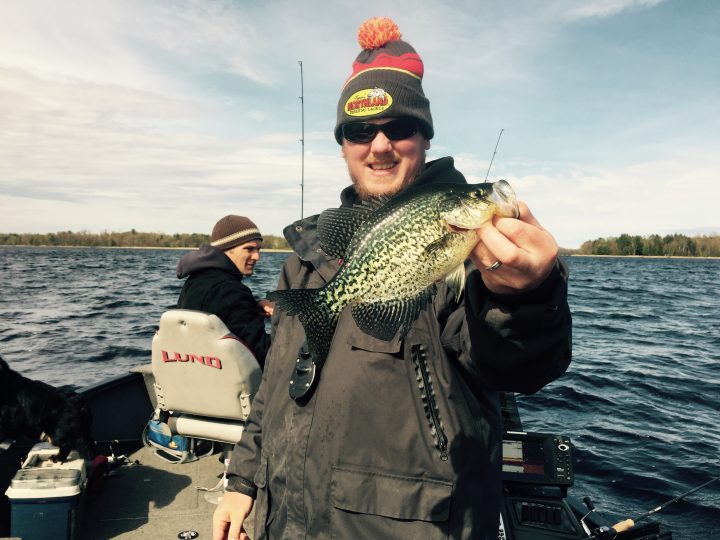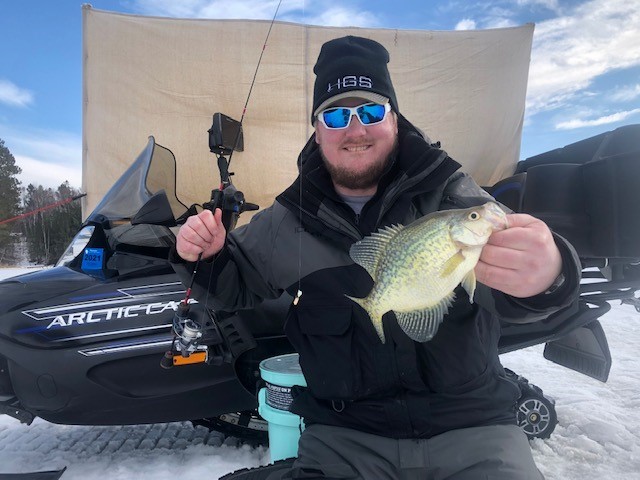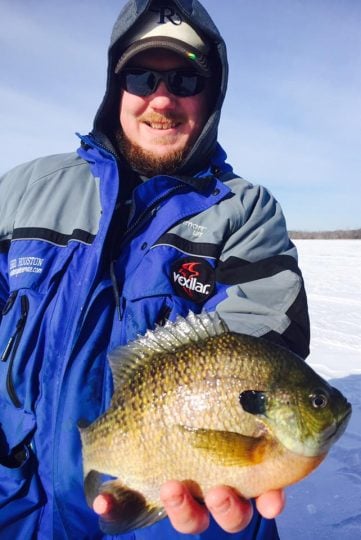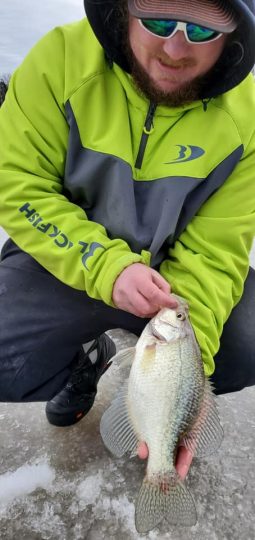
Springtime panfish fishing is by far one of the most enjoyable ways to spend a day. Since our last guide trip last weekend, I have been chasing pannies every single day. This week I have gone as far as even traveling to Ottertail County, MN for a day trip in panfish paradise. Anyone that knows sunfish, crappies, and perch will agree, they can be challenging, but when you find where and what is working, the rewards can be staggering. Game plans for hunting panfish for me start with location and documented journals. I like to look back and often go against what we should not do, that is fishing memories. If last year, mid to late march I found successful fish outings doing something, I look to repeat that same cycle.
Everybody of water has its own culture and fish tendencies, but here are a few commons. On small to medium-sized lakes, I like to always start on shallower weeds. All year long panfish relate to vegetation, especially in the spring when photosynthesis is just starting to engage. On shallower areas of lakes, this is where it all begins. Plants and other organisms will convert light energy into chemical energy, and this will ultimately fuel organisms’ activities. In simpler terms, mud is starting to eat dead decaying weeds and beginning to sprout new vegetation and microscopic bug larvae. Fish, especially small forage-based perch and bluegills will take advantage of this. The further into the “ice out” phase, and into the early open water spring we go, the fishing will only get better. Waters to the south are obviously a couple of steps ahead of us in the north country.

As mentioned, smaller fish will start on these locations, but as the days continue to get longer and things warm up, more and more mature gills will start to infiltrate as well. Until then the bigger panfish can often be found roaming in schools over soft substrate areas in, and around deeper basins. I like to look for these fish near the deep holes but on the break or transition spots. Depth to target depends on the size and characteristics of the lake, but my favorite depths are usually in the 13-19 feet of water. Medium to larger lakes may take a little longer with the “science” process, on account of the volume of water. However, you can always break lakes into sections, and it pays to look toward back bays. Think of them as little lakes inside of big lakes. After the location has been established, there are a few ways I like to attack the fish.
Modern ice angling has taught us that drilling out several holes for hole hopping is productive. With that said, if you’re going to be a successful panfish angler, plan on putting in maximum effort. Sure, a guy can drill out a couple of holes and sometimes find luck. However, I would rather increase my odds any way I can. This includes going above and beyond “a couple” holes. On a typical day, you will catch our team making swiss cheese out of a panfish location. Depending on what stage the panfish are in (if they are spread out or schooled uptightly) also plays into our “ice trolling” auger sequence. Tightly schooled fish for me require a hole no less than every 6 feet. For more spread-out fish or bigger areas, I would say a hole no less than every 12 feet. From there, you usually can dial in productive ice fishing holes. A couple of notes in relation to making swiss cheese that should be mentioned: try and complete drilling operations early to allow the fish time to recover from all the noise pollution and work in teams to increase efficiency. For example, one guy drilling and another checking depths and for fish with a Vexilar. Again, and to be clear, it’s nice to get the grunt work out of the way before dropping a line. The more up-front work that is completed, the better the chances for a successful day of fishing.


Let’s talk about rod, line, bait presentation. My go-to panfish rod is always going to be a very limber soft-tipped type fishing pole. My line is going to be very small diameter #2lb or #4lb monofilament. For the business end of things, we can go on and on about what works best, but these are my usual go-to’s. I like several of the Northland Fishing Tackle panfish selections including but not limited to: MudBug, Gill Getter, Tungsten Punch Fly & Punch Jig, etc. These baits all have a horizontal profile approach which is very productive for catching the roof of the mouth in a panfish. Of course, these jigs come in different sizes, and choosing the right weight and size to fish will often depend on the fish’s attitudes. If they are going “gangbusters” I like to utilize large, and vice versa for a slower bite. As far as what to tip on my jigs also depends on fish attitude. It can often be hard to beat the magic of a live waxworm or maggot, but like any avid fishermen, I always try to get by with using soft plastics. A couple of my go-to’s are the Impulse lines of skeleton minnows and water fleas.
Technique plays a critical role when on top of fish as well. I like to always try and catch the fish that is above the others in the school. The reason why is because if the fish are in a skittish way, I do not want to chase off fish by catching other fish. On the flip side of things, sometimes success can come from “creating your own school”. If struggling to mark multiple fish on your Vexilar, try to build up a population of active feeders. One way I do this is to hook up with a panfish and slowly retrieve it. Often this can trigger a feeding frenzy. Fish are competitive feeders by nature, so it’s not uncommon to build your own school of fish. As we transition from late ice into open water, take it from me that much of this information can also relate to successful long rodding. I hope you come to find some of this knowledge useful on your next panfish adventure. All the best hooksets and I’ll see you out there!
Tight Lines & GoOd FiShN,
Capt. Jarrid
Houston’s Guide Service
(218)-393-4962 or [email protected]
www.houstonsguideservice.com
like us on Facebook “Houston’s Guide Service”


